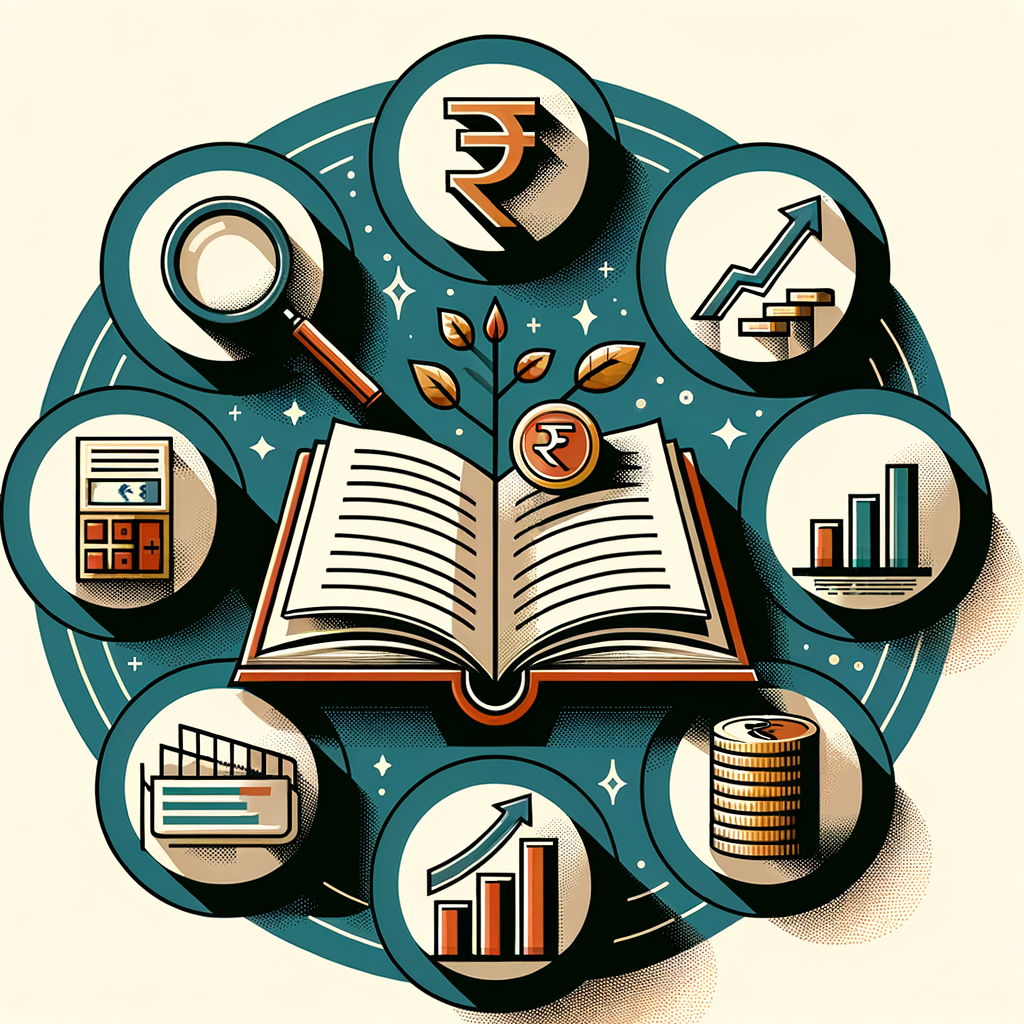The Role of Financial Education in Successful Debt Management
The constant pressure of credit card bills, a looming business loan, or the dream of a debt-free life can feel distant for many Indians. Debt often becomes a significant source of daily stress, leaving individuals and business owners feeling trapped. But what if the solution isn’t just about earning more money, but about fundamentally understanding it better? This is where the crucial role of financial education in debt management comes into play. It’s the foundational skill that transforms how you view, handle, and ultimately conquer your financial obligations, turning a source of anxiety into a manageable part of your financial journey.
This comprehensive guide will break down why financial education in debt management India is a non-negotiable skill for both salaried individuals and small business owners. We will explore practical, actionable strategies and demonstrate how knowledge can be your most powerful tool for achieving successful debt management and lasting financial freedom.
What is Financial Education? (And Why It’s Your First Step to Beating Debt)
Before diving into complex repayment strategies, it’s essential to understand the bedrock upon which all successful debt management plans are built: financial education. It’s not a niche skill reserved for finance professionals; it is a vital life skill for everyone navigating the modern economy.
Defining Financial Literacy Beyond Just Numbers
Financial education is not about memorizing complex investment algorithms or understanding intricate market fluctuations. At its core, it is the practical knowledge and skills needed to manage your money effectively. This includes:
- Budgeting: Knowing exactly where your money comes from and where it goes.
- Saving: Developing the discipline to set aside money for future goals and emergencies.
- Investing: Understanding how to make your money work for you over the long term.
- Understanding Credit: Knowing the difference between various loan products, how interest is calculated, and the impact of credit on your financial life.
The importance of financial literacy in debt management India cannot be overstated, especially in an environment where digital loans, credit cards, and ‘Buy Now, Pay Later’ schemes are expanding at an unprecedented rate. Financial literacy empowers you to shift from making reactive, often emotional, financial choices to making proactive, informed decisions that align with your goals. It’s the difference between being controlled by your debt and taking control of it.
The Vicious Cycle of Debt Without Financial Knowledge
A lack of financial understanding creates a fertile ground for debt to grow uncontrollably, often trapping individuals in a difficult-to-escape cycle. This vicious cycle is fueled by several common pitfalls:
- Choosing High-Interest Debt: Without understanding Annual Percentage Rates (APRs) and compounding interest, it’s easy to opt for seemingly convenient personal loans or credit cards that carry exorbitant interest rates, making the debt much more expensive over time.
- Missing Payments and Incurring Penalties: A lack of organized financial tracking leads to missed due dates. This not only adds hefty late fees and penalty interest to the outstanding balance but also begins to damage your credit history.
- Damaging Your CIBIL Score: Every missed payment is reported to credit bureaus like CIBIL. A low CIBIL score acts as a red flag for lenders, making it significantly harder and more expensive to secure credit in the future, whether it’s for a home loan, a car loan, or even a basic credit card.
- Unsustainable Business Loans: For small business owners, a lack of financial education can be catastrophic. Taking on significant business loans without a thorough cash flow analysis, a clear repayment plan, or an understanding of the loan terms can jeopardize the entire enterprise.
This cycle—taking on expensive debt, struggling to pay it, damaging your credit score, and then being forced to accept even worse credit terms—can only be broken with knowledge.
How Financial Education Aids Debt Management in India: A Practical Breakdown
Financial knowledge is not just theoretical; its true power lies in its application. Here’s a step-by-step breakdown of how you can use financial education to build a robust debt management plan.
Step 1: Creating a Realistic Budget to See the Full Picture
You cannot manage what you do not measure. A budget is the single most important tool in your debt management arsenal. It’s not about restricting yourself; it’s about empowering yourself with clarity. The process is simple: list all your monthly sources of income and then meticulously track all your expenses. Categorize your expenses into fixed (rent, EMI, insurance) and variable (groceries, entertainment, fuel).
A great starting point is the 50/30/20 rule:
- 50% for Needs: This portion of your income covers essential living expenses like housing, utilities, transportation, and groceries.
- 30% for Wants: This covers discretionary spending like dining out, shopping, hobbies, and entertainment.
- 20% for Savings & Debt Repayment: This is the powerhouse of your financial plan. This portion is dedicated to building an emergency fund, saving for long-term goals, and, most importantly, aggressively paying down debt.
By creating this budget, you will immediately see where your money is going and identify areas where you can cut back. That extra money freed up from the ‘Wants’ category can be redirected to accelerate your debt repayment, saving you a significant amount in interest over time. These are the foundational debt management education tips India that apply to everyone, regardless of income level.
Step 2: Understanding Your Debt – Good vs. Bad
Not all debt is created equal. A key aspect of financial education is learning to distinguish between debt that can help you build assets and debt that simply drains your wealth.
| Type of Debt | Definition | Examples | Purpose |
|---|---|---|---|
| Good Debt | Debt used to purchase assets that have the potential to appreciate in value or generate income over time. | Home Loan, Education Loan, Business Loan for Expansion | To build long-term wealth or increase earning potential. |
| Bad Debt | Debt used to purchase depreciating assets or for consumption. It is typically high-interest and does not generate future income. | Credit Card Debt for non-essentials, Personal Loans for vacations, High-interest consumer loans | To fund a lifestyle that may be beyond one’s means. |
Understanding this distinction is crucial. While you must pay all your debts, your strategy should prioritize the aggressive elimination of ‘bad debt.’ The high interest rates associated with credit cards and personal loans act like a financial anchor, holding you back from building wealth. By focusing your efforts on clearing these first, you free up more cash flow to tackle other debts and start saving.
Step 3: Demystifying Your CIBIL Score
In India, your CIBIL score is your financial report card. This three-digit number, ranging from 300 to 900, tells lenders how responsible you are with credit. A higher score means you are a lower-risk borrower, which translates to easier loan approvals and lower interest rates.
Several key factors impact your CIBIL score:
- Payment History (Highest Impact): Making all your payments on time is the most important factor. Even one late payment can negatively affect your score.
- Credit Utilization Ratio: This is the amount of credit you are using compared to your total available credit limit. For example, if you have a credit card with a ₹1,00,000 limit and a balance of ₹70,000, your utilization is 70%. It’s best to keep this ratio below 30%.
- Credit Mix: Lenders like to see that you can responsibly manage a mix of credit types, such as secured loans (home loan) and unsecured loans (credit card).
- Recent Credit Inquiries: Applying for too much credit in a short period can temporarily lower your score, as it may signal financial distress to lenders.
You can improve your score by paying every bill on time, keeping your credit card balances low, and only applying for new credit when you truly need it. It’s a good practice to check your CIBIL score periodically. You can get a free report once a year from the official source, and it’s also important to know How to Track Your Credit History Using Your PAN Card Via CIBIL.
Action Tip: Check your CIBIL score and report for free on the official TransUnion CIBIL Website.
Step 4: Choosing the Right Debt Repayment Strategy
Once you have a budget and understand your debts, you need a clear strategy to pay them off. Two of the most popular and effective successful debt management strategies India are the Debt Snowball and Debt Avalanche methods. For a detailed comparison, see our guide on Debt Snowball vs. Debt Avalanche: Which Strategy Is Best for You?.
- The Debt Snowball Method:
- How it works: You list your debts from the smallest balance to the largest, regardless of the interest rate. You make minimum payments on all debts except the smallest one, which you attack with every extra rupee you have. Once the smallest debt is paid off, you “snowball” that payment amount onto the next-smallest debt.
- Best for: Individuals who need quick, motivational wins to stay on track. The psychological boost of clearing a debt, even a small one, can provide the momentum to keep going.
- The Debt Avalanche Method:
- How it works: You list your debts from the highest interest rate to the lowest, regardless of the balance. You make minimum payments on all debts except the one with the highest interest rate. You throw all your extra money at that high-interest debt until it’s gone. Then, you move to the debt with the next-highest interest rate.
- Best for: Individuals who are motivated by numbers and want to save the most money possible. Mathematically, this method is the most efficient and will get you out of debt faster and cheaper.
Choosing between these two depends on your personality. If you need motivation, choose the Snowball. If you are disciplined and want to optimize your payments, choose the Avalanche. The best strategy is the one you will stick with.
The Long-Term Benefits of Financial Education for Debt Management
The journey of managing debt is not just about reaching a zero balance; it’s about transforming your entire financial life. The benefits of financial education for debt management extend far beyond the immediate relief of being debt-free.
- Reduced Financial Stress: Money is one of the leading causes of stress and anxiety. When you have a clear plan and are actively working to reduce your debt, you regain a sense of control. This knowledge and control significantly improve your mental and emotional well-being, allowing you to focus on other important areas of your life.
- Improved Access to Future Credit: As you responsibly manage and pay off your debts, your CIBIL score will improve. A strong credit history built on the principles of financial literacy means that when you need a loan in the future—for a business expansion, a home purchase, or a child’s education—you will be offered better terms, lower interest rates, and higher approval chances.
- Building Long-Term Wealth: Debt management is the crucial first step toward wealth creation. Once you eliminate high-interest debt, the money you were paying in interest can be redirected toward savings and investments. Financial literacy for successful debt management seamlessly transitions into financial literacy for wealth building, helping you create a secure and prosperous future.
Resources for Financial Education Programs for Debt Management in India
Self-education is a powerful tool, and fortunately, there are many credible resources available to help you on your journey.
Government and Official Initiatives
The Indian government and its regulatory bodies have recognized the importance of financial literacy and have launched several initiatives to educate the public.
- Reserve Bank of India (RBI): The RBI has a dedicated section on its website for financial education, offering easy-to-understand material on banking, credit, and fraud prevention. Check out the RBI’s Financial Awareness page.
- National Centre for Financial Education (NCFE): The NCFE is a body promoted by RBI, SEBI, IRDAI, and PFRDA to promote financial education across India. Their website is a treasure trove of information for students, professionals, and adults. Visit the NCFE Portal.
Getting Help from the Experts
While self-learning is essential, the guidance of a professional can be invaluable, especially for small business owners juggling multiple financial responsibilities. Understanding financial statements, managing cash flow, and ensuring tax compliance are critical components of preventing and managing business debt.
This is where TaxRobo can be your trusted partner. Our expert services in Accounting, Bookkeeping, and Tax Filing provide the financial clarity and robust record-keeping that form the backbone of good financial management. By ensuring your books are accurate and up-to-date, we help you make informed decisions, track your financial health, and stay compliant, freeing you to focus on growing your business and managing your finances effectively. Among the many financial education programs for debt management in India, having a professional handle your compliance is one of the smartest investments.
Explore our Accounting & Bookkeeping Services to see how we can support your business.
Conclusion
Ultimately, the role of financial education in debt management is one of empowerment. It is the skill that allows you to move from being a passive participant in your financial life to being an active, confident manager of your own destiny. It involves understanding your complete financial picture, creating a realistic plan, choosing the right strategies, and consistently executing that plan.
Learning to manage debt successfully is not a one-time fix; it is a lifelong skill that pays dividends in the form of financial stability, reduced stress, and peace of mind. The journey from debt to financial freedom begins with a single step: the decision to learn.
Ready to take control of your finances? While you focus on learning and implementing your debt management plan, let TaxRobo handle the complexities of your business’s accounting and tax compliance. Contact us today to see how our expert services can support your journey to becoming debt-free.
Frequently Asked Questions (FAQs)
1. Is it possible to manage debt effectively on a low income?
Answer: Absolutely. Financial education is even more critical on a tight budget. Effective debt management is not about how much you earn, but how well you manage what you have. For those on a low income, strategies like creating a strict budget, ruthlessly cutting non-essential spending, and using the Debt Snowball or Avalanche method to prioritize high-interest debt are key to making progress.
2. I’m overwhelmed with debt. What is the very first step I should take?
Answer: The first and most crucial step is to stop and assess the situation calmly. Do not take on any new debt. Your immediate task is to create a comprehensive list of all your debts. For each debt, write down who you owe, the total amount outstanding, the minimum monthly payment, and the interest rate. This act of creating clarity is the foundational first step of any successful debt management plan.
3. How does financial education help a small business owner specifically?
Answer: For a small business owner, financial education is vital for survival and growth. It helps in:
- Understanding and managing cash flow: Ensuring the business has enough liquid cash to cover expenses.
- Creating realistic financial projections: Making informed decisions based on data, not guesswork.
- Distinguishing between business and personal expenses: Maintaining clean books for accurate profit analysis and tax filing.
- Making informed borrowing decisions: Knowing when to take on ‘good debt’ for growth and avoiding ‘bad debt’ that can sink the company. Learning about the Top 10 Financial Mistakes Small Businesses Make can provide crucial insights.
4. Where can I find reliable and free financial education resources in India?
Answer: The official websites of the Reserve Bank of India (RBI) and the National Centre for Financial Education (NCFE) are excellent, unbiased sources for foundational knowledge. Additionally, many reputable financial news portals and blogs run by SEBI-registered investment advisers share high-quality, free educational content. Always start with the official government and regulatory resources to build a strong, reliable base of knowledge.



